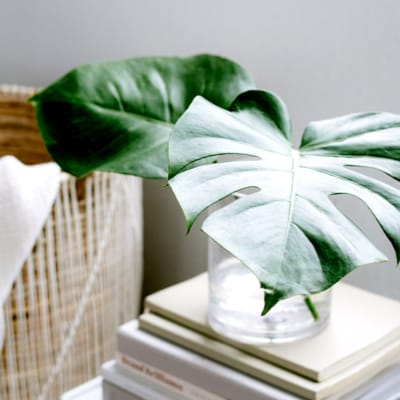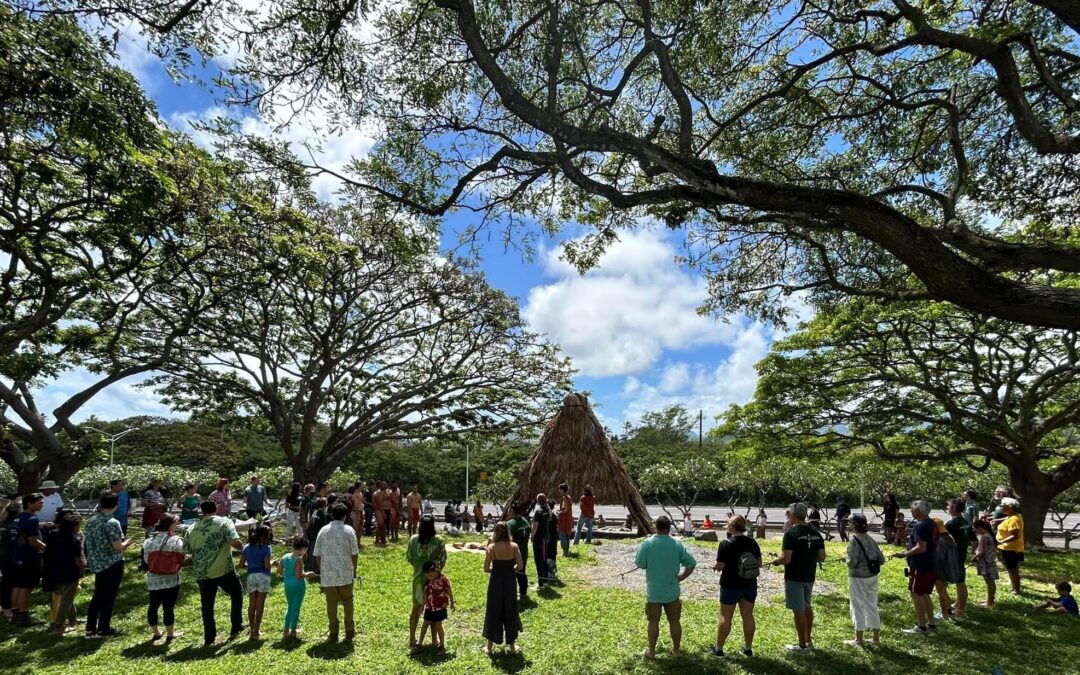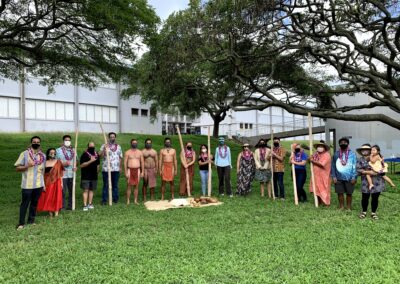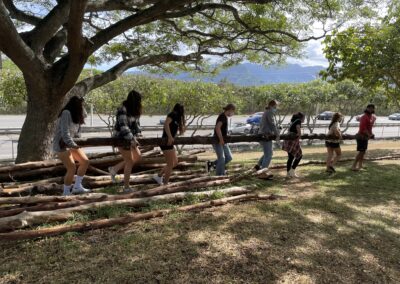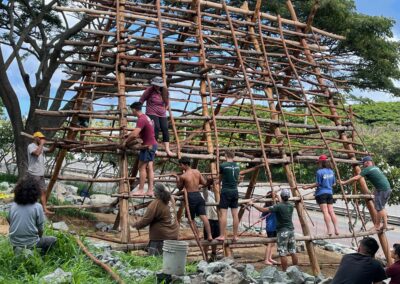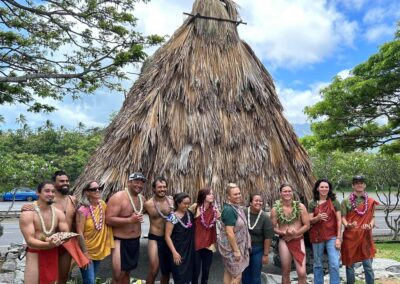Hale Kaleilenaokealoha
Kaleilenaokealoha – The Hale Halawai
“Ma ka hana ka ʻike” is an ʻōlelo noʻeau or ancient Hawaiian proverb that has been passed down for generations. It translates to “in working, one learns”. It is an ʻōlelo noʻeau that I came across a long time ago when I began teaching. I had not known it, but it was the way many of us learn; we learn by examples, we learn by demonstration, we learn by doing.
The idea of the Hale came suddenly when I texted Ms. Ramolete about building a Hale on our campus. We are both dedicated educators and Hawaiian cultural practitioners, but this was something we knew we needed to put in educational spaces and would provide an amazing opportunity for students, staff and the community to learn and take part in.
We consulted multiple sources of hale builders, schools and community members and Keahi Piʻiohia from Paepae O Heʻeia was our guy that would be the lead for our hale. Keahi is a very good friend of our families and he is the Kū Hou Kuapa Project Manager at Paepae. Keahi was more than willing to help us with our project and he has been an amazing teacher in educating us on how to do everything from selecting the space we wanted to put our hale, going through protocol to bless the area, gathering the correct materials for the project, teaching us how to do the traditional lashing…everything. I am so glad that we found him and his crew because without his guidance and patience with us, we would not have been successful.
In came the planning. The hale came with many obstacles that Ms. Ramolete and I knew we had to journey through. We are a DOE school and the size and scale we wanted for the Hale needed a permit, but there were no permitted Hale structures that we knew of on any DOE campus. Some schools who had similar projects either dropped the project because the paperwork was too difficult, stayed within a size range where you didnʻt need a permit or asked for forgiveness later. In truth, you could build a hale in a week if you dedicated all of your time to the structure, but because I’m a teacher with teacher responsibilities and we are a public school, there were a lot of moving parts to the project. We needed to consult an architect. We needed blueprint drawings. We needed DOE Facilities and District Superintendents and DOE Arborists…so many people to be consulted for a traditional Hawaiian structure to be built, that it took 2 years to even break ground.
In waiting for paperwork to process, we planned field trips to Paepae O Heʻeia to gather our Mangrove logs. Keahi and his crew at Paepae O Heʻeia visited our school campus and provided us with lessons on how to do different lashing techniques, how to debark the logs, how to tie loulu palms together to prep it for the roof. Ms. Gardner and her Natural Resources class planned field trips to Hamakua Marsh to gather loulu palm and as our small groups of students were learning these things, we were able to pass on this knowledge to the rest of the Kalāheo Community. Many teachers and staff began helping with our project. They began bringing their classes down to debark the mangrove and helping us prep the logs for the build.
Meanwhile, the Office of Hawaiian Education was beginning to build their ʻĀina Aloha Pathway and funding was another major obstacle for this project. We began with no money, but OHE had this opportunity to provide any financial assistance for cultural projects or programming, so we applied for their grants. Ms. Ramolete and I also applied for multiple grants we could find to fund our supplies like buckets, shovels and paracord.
Community was a large component to this project. We knew that in order to get everyone on board with the project, we needed to let the community know what we were doing. Our Kalāheo students met with the Kailua Neighborhood Board and shared our Hale project and what it meant to them; the importance of building it and the pride that would be ignited in them to accomplish a legacy project like this one. The Hoʻokamaʻāina Committee wrote multiple letters to different organizations and made multiple phone calls to our neighboring community about our project. When we had our work days, many businesses and community members donated food for our work days and came out to kōkua.
We broke ground on September 2, of last year, Queen Liliʻuokalaniʻs birthday and this was a hōʻailona or sign that we knew we were doing something great. I got one of my former students to help us excavate the site and move our stones to our location. A few weeks later, we had our whole student body come out and help us move rocks to prep our walls. And almost every Saturday we had community work days until April. Friends, family, other Kailua Administration and community members came out to see what our hale was about and they came to kōkua in the work. We had multiple student on campus work days all while we were also teaching cultural traditions to students and staff during our Student Advisory Periods.
The moʻolelo of our Hale also traveled far and wide across the nation. I am involved in different arts and cultural advocacy organizations so I was able to tell our story to people in the Senate, at the White House and across multiple Arts Organizations across the US. I told our story to show the importance of cultural arts into everyday lives of students and community. On many of our work days, engaging in conversation with those teaching and guiding you through a simple task like moving a stone from one area to another or communicating to people down the line that you need to hold a log up higher to lash it onto another seemed daunting; the feeling of triumph when the first 20-30 ft tall logs stood as large A-Frames on their own with just braces seemed like an impossible task, but with guidance and help from everyone within the, we accomplished our goal.
Every piece of this hale was done by the students, our staff and our community and the skills and knowledge they learned in doing a large project like this together. We really built a community with Kaleilenaokealoha.
Join
Work With Me
